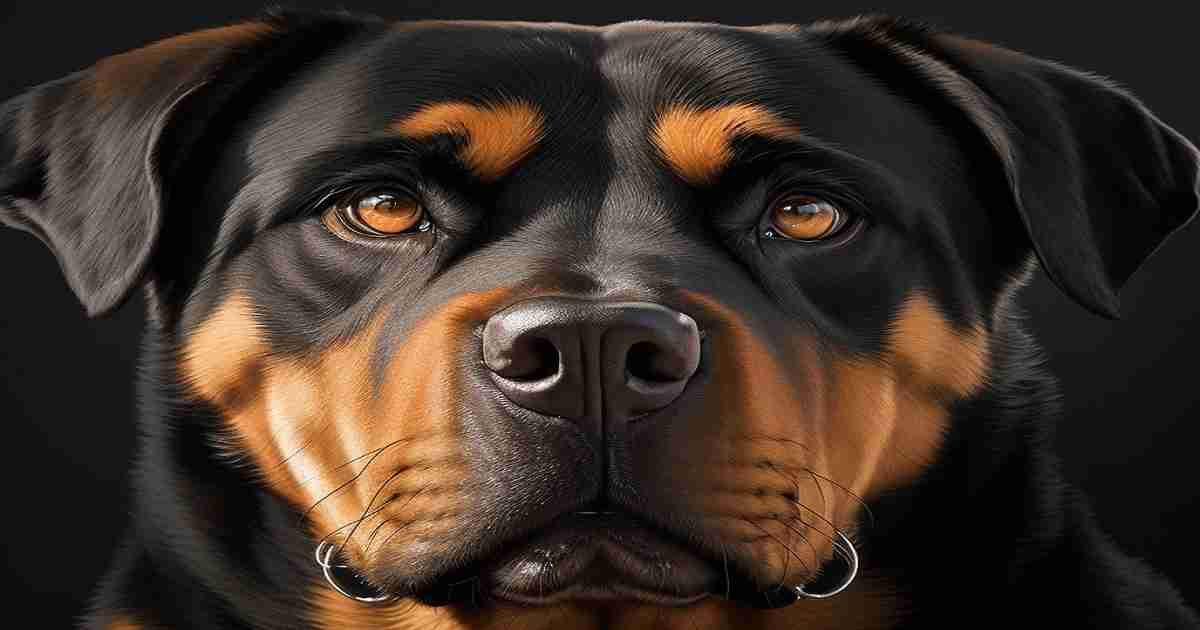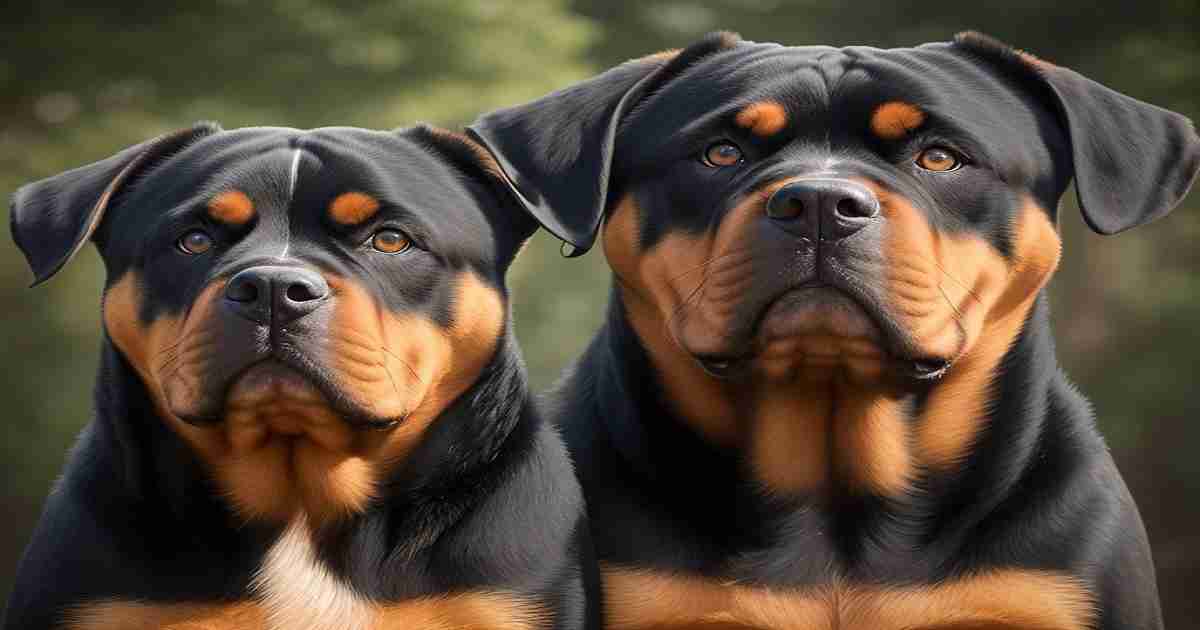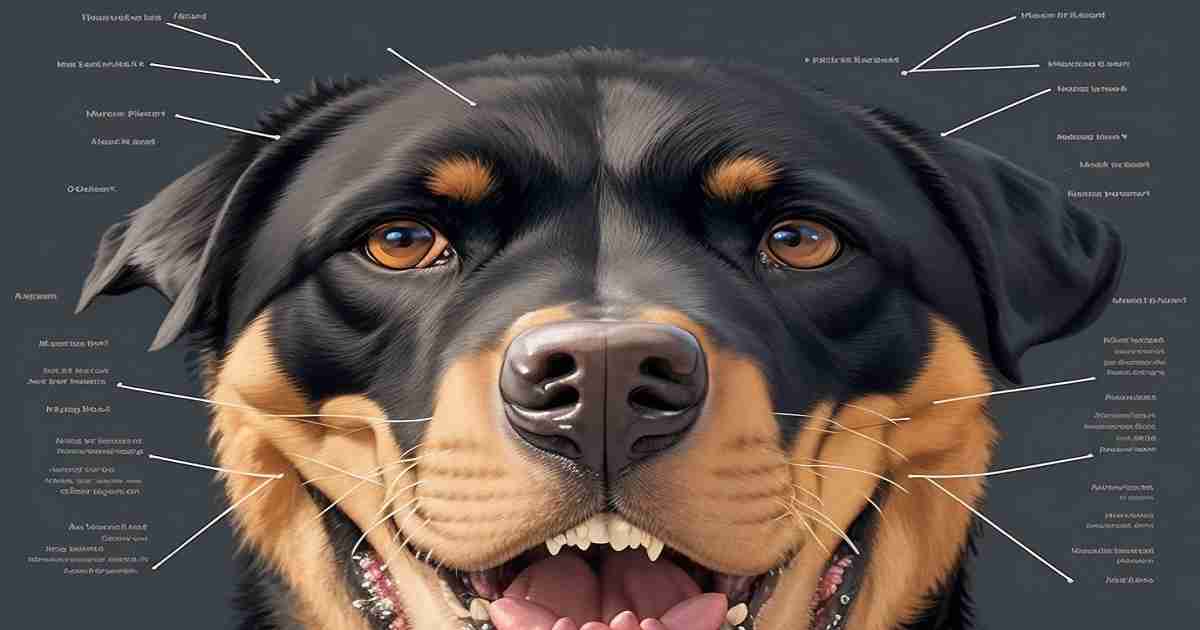The Rottweiler is a large dog breed known for being loyal pets and protectors. They are strong dogs with prominent personalities.
Rottweilers usually have broad heads, but there are some differences in their head shapes. Learning about these differences can help Rottweiler owners better understand and care for their dogs.
What is Considered the Standard Rottweiler Head Shape?
The American Kennel Club (AKC) has a preferred look for Rottweilers. According to the AKC, the ideal Rottweiler head shape is:
- Comprehensive – The skull is broad and domed between the ears.
- Deep – There is an apparent stop and strong cheekbones.
- Strong jaws – The upper and lower jaws are sturdy with loose lips. This gives Rottweilers their signature scissor bite.
- Dark, almond-shaped eyes – The eyes are medium-sized, deep-set, and brown. They look focused and alert.
- Triangular, medium-sized ears – The ears stand up on the side of the head close to the cheeks.
- Proportionate in size – The head size matches the body size. Males have more extensive, broader heads than females.
This standard head shape reflects the Rottweiler’s history as a tough working dog.
What are the Different Head Shape Variations?
While the AKC describes the ideal head type, some natural differences exist. The main variations are broad heads vs. narrow heads.
Broad Heads
Some Rottweilers have vast heads. These heads show brachycephalic traits. Brachycephalic means short and wide. Characteristics include:
- Short, broad muzzle and skull
- A flat face without a clear stop
- Eyes with the white part showing
- Poor bite with teeth not lining up
- Excessive wrinkles on face and lips
- Difficulty breathing due to small nostrils
Extensive heads are considered a fault according to the standard.
Narrow Heads
Rottweilers with narrower heads are more mesaticephalic in shape. Mesaticephalic means a longer skull and muzzle. These heads have:
- Longer muzzle and skull
- Defined stop between forehead and muzzle
- Tighter lips with less hanging flews
- Proper scissor bite
- Overall elongated head shape
Narrower heads often match the AKC standard better. But fragile skulls are also a fault.
Why Such Differences in Head Shape?
Genetics is responsible primarily for the variations in Rottweiler head shapes.
- German working bloodlines tend to have stocky, broad heads. This was useful for their cattle herding work.
- European show lines typically have more refined, narrower heads that meet the breed standards.
- Mixed backgrounds can also lead to distinct head types.
While genetics are fundamental, nutrition and health as a puppy affect skull growth, too. Responsible breeding is essential for the ideal Rottweiler head shape.
How Do Head Shapes Impact Health?
Differences in Rottweiler head shape can affect:
Breathing Ability
- Very brachycephalic skulls often lead to breathing problems like narrowed nostrils, long soft palate, and obstructed airways.
- More mesaticephalic heads allow for better airflow due to longer muzzles and nostrils.
Tolerance to Heat
- Compressed nasal passages in broad heads make it hard for dogs to cool down by panting.
- Narrower heads support better air circulation and heat exchange.
Overall Health
- Severely brachycephalic dogs tend to have chronic issues like difficulty breathing, poor exercise tolerance, sleep apnea, and related conditions.
- Dogs with less extreme heads usually have better stamina and fewer respiratory troubles.
While some variation is expected, responsible breeding minimizes extreme shapes to promote health.
Why Responsible Breeding Matters
Good breeders aim for a balanced head shape to keep Rottweilers healthy and ideal for their roles.
- Breeding just for looks over function should be avoided.
- Genetic testing helps guide pairings that reduce inherited conditions.
- Monitoring growth allows for early help if skull issues appear.
- Following AKC standards prevents head extremes that affect breathing and endurance.
Knowledgeable breeding focused on health produces Rottweilers true to their working dog roots.
Frequently Asked Questions
What is the perfect head shape for a Rottweiler?
- The best Rottweiler head is broad and deep but not overly wide or narrow. It should have a domed skull, defined stop, strong jaws, dark almond eyes, and medium-sized triangular ears in proportion to the body.
Can vast heads cause health problems in Rottweilers?
- Dogs with severely brachycephalic skulls often have respiratory issues, get overheated easily, and have less energy and stamina. However, responsible breeding can reduce these risks.
How do genes change the shape of Rottweiler heads?
- Genetics significantly impact head shape. German working lines tend to have stockier heads, while European show lines have more refined heads. Mixed backgrounds also result in different conditions.
Conclusion
Rottweilers are strong, intelligent dogs valued for their protectiveness and loyalty. While broad heads are typical, variations exist, affecting form and health.
Knowledgeable breeding focused on meeting standards and promoting health is vital to preserving excellent Rottweilers true to their working heritage.
By understanding head shape differences, owners can better appreciate the diversity within this noble breed.









4 thoughts on “Think Your Rottweiler Head Shape is Cute? Here Are 5 Startling Health Risks You Must Know About!”